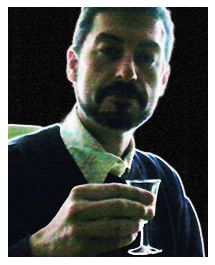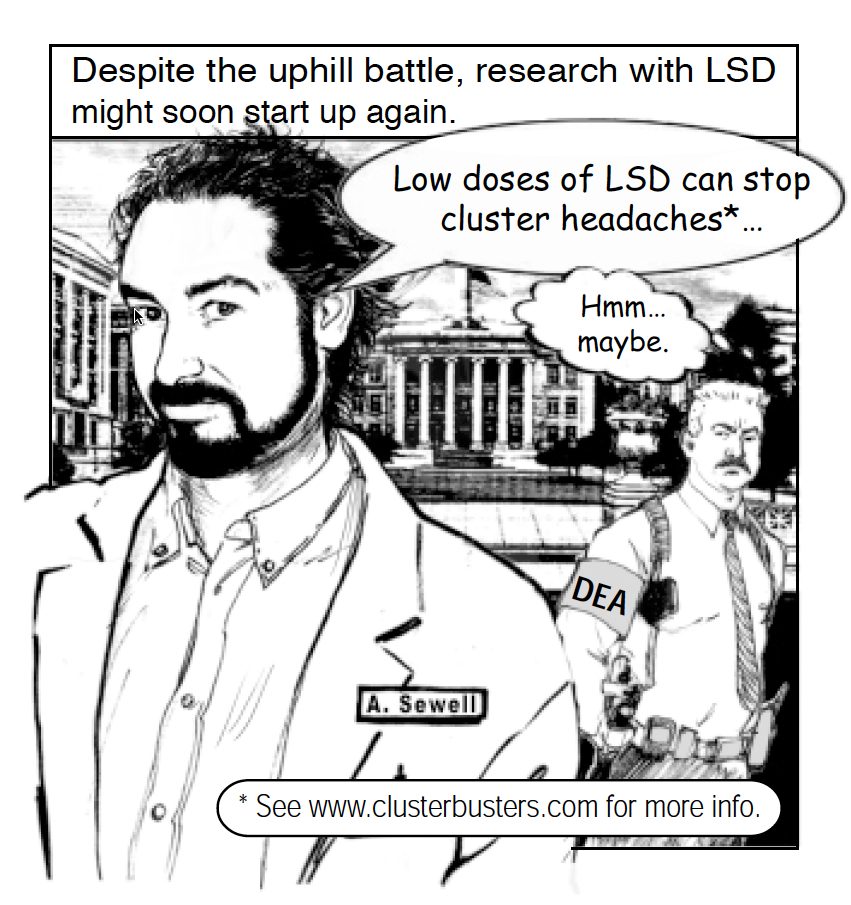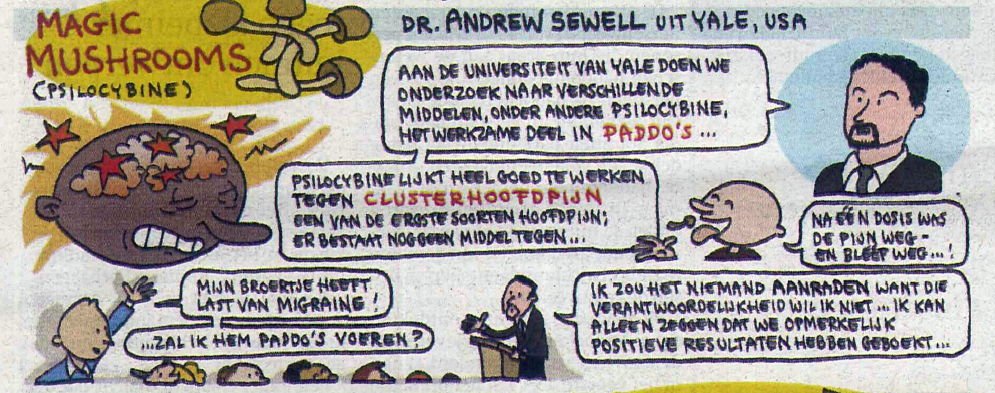
Photo by Jon Hanna, 2008
Erowid Character Vaults
R. Andrew Sewell
November 22, 1971 - July 21, 2013
Summary
Born in West Sussex, England, Andrew Sewell trained in clinical psychiatry and clinical neurology, entering the medical field to study therapeutic applications of psychedelic drugs. He obtained a BA in Physics from Cornell in 1993, and an MD from the University of Connecticut in 1998. In 2004, Sewell was the first graduate of the combined residency program in Neurology and Psychiatry at the University of Massachusetts, where he served as Chief Resident in Neuropsychiatry. From 2004 through 2007, Sewell was a Research Fellow in Psychiatry at Harvard's McLean Hospital, where he initially studied the psychological and biological responses to nicotine and cocaine, as well as the use of functional MRI as a tool for assessing the effects of acute drug administration.
Aware of the challenges inherent in a medical career studying psychedelics, Sewell shifted his focus to headache treatment. As a frequent lecturer at the American Headache Society meeting, Sewell was astonished when he first heard claims by Bob Wold, founder of Clusterbusters, that psychedelics cured cluster headaches. With funding from MAPS and survey development and hosting by Erowid, Sewell conducted a questionnaire related to cluster headaches and the use of psychedelic drugs, determining that LSD and psilocybin are at least as effective as conventional medications at aborting an acute attack; what's more, they appeared able to terminate cluster periods and prevent them from reoccurring, which no conventional medicine is known to do. After publishing his results, Sewell looked into the use of LSA-containing plant seeds to treat cluster headaches, with promising results. Inspired by a 1963 paper by Frederigo Sicuteri, "Prophylactic Treatment of Migraine by Means of Lysergic Acid Derivatives", Sewell proposed that BOL-148 (a nearly non-psychoactive LSD analog) might work similarly to LSD, with regard to its ability to terminate cluster periods and/or extend their remission times. After leaving Harvard, Sewell filed a patent on his idea, "Compositions and Methods for Preventing and/or Treating Disorders Associated with Cephalic Pain", covering the use of LSD and BOL to treat cluster headaches.
Following several years of research at McLean ending in July 2007, Sewell moved to Yale, where he completed fellowships in substance abuse research and schizophrenia research; he also began work as an attending physician at VA Connecticut Healthcare. From 2007 through 2012, Sewell worked at Yale as an Associate Research Scientist in Neuropsychopharmacology, after which he became an Assistant Professor of Psychiatry at the Yale School of Medicine. While there, Sewell investigated the effects in humans of alcohol, amphetamine, THC, salvinorins, and other psychoactive chemicals, looking at the GABA, dopamine, cannabinoid, and K opioid systems to learn about the neurobiology of mental diseases. Involved with positron emission tomographic neuroimaging of cannabinoid receptors, Sewell's primary interest was in exploring the therapeutic potential of cannabinoids to treat aspects of post-traumatic stress disorder. Sewell received over a dozen awards and honors in the field of medicine, including a Career Award from the Department of Veterans Affairs and a Young Investigator Award from the Brain and Behavioral Foundation for his work at Yale.
 Involved with numerous research projects over the course of his distinguished but too-short career, Sewell authored or co-authored over 50 published articles, letters, and posters; he regularly presented his findings at international conferences and professional meetings. He served on the Scientific Program Committee of the American Neuropsychiatric Association, was a Resident Representative of the Massachusetts Medical Society, a member of the Erowid Expert Network, and a member of numerous other professional societies, as well as having been on the editorial boards for a dozen journals. His 2007 article, "So You Want to be a Psychedelic Researcher?" garnered a great deal of attention on this topic.
Involved with numerous research projects over the course of his distinguished but too-short career, Sewell authored or co-authored over 50 published articles, letters, and posters; he regularly presented his findings at international conferences and professional meetings. He served on the Scientific Program Committee of the American Neuropsychiatric Association, was a Resident Representative of the Massachusetts Medical Society, a member of the Erowid Expert Network, and a member of numerous other professional societies, as well as having been on the editorial boards for a dozen journals. His 2007 article, "So You Want to be a Psychedelic Researcher?" garnered a great deal of attention on this topic.
 Sewell was depicted in cartoon form twice related to his contributions to the field of treating cluster headaches with psychedelics. He volunteered as a sitter in psychedelic crisis tents for the BOOM Festival in Portugal and Burning Man in Nevada. A die-hard Burner, he co-founded the Oakburners, a Connecticut Burning Man group. His intelligence, dedication, and quick sense of humor were much appreciated by his friends and colleagues within the psychedelic community. He passed away in 2013 due to complications following a surgery that removed some pre-cancerous tumors.
Sewell was depicted in cartoon form twice related to his contributions to the field of treating cluster headaches with psychedelics. He volunteered as a sitter in psychedelic crisis tents for the BOOM Festival in Portugal and Burning Man in Nevada. A die-hard Burner, he co-founded the Oakburners, a Connecticut Burning Man group. His intelligence, dedication, and quick sense of humor were much appreciated by his friends and colleagues within the psychedelic community. He passed away in 2013 due to complications following a surgery that removed some pre-cancerous tumors.
Aware of the challenges inherent in a medical career studying psychedelics, Sewell shifted his focus to headache treatment. As a frequent lecturer at the American Headache Society meeting, Sewell was astonished when he first heard claims by Bob Wold, founder of Clusterbusters, that psychedelics cured cluster headaches. With funding from MAPS and survey development and hosting by Erowid, Sewell conducted a questionnaire related to cluster headaches and the use of psychedelic drugs, determining that LSD and psilocybin are at least as effective as conventional medications at aborting an acute attack; what's more, they appeared able to terminate cluster periods and prevent them from reoccurring, which no conventional medicine is known to do. After publishing his results, Sewell looked into the use of LSA-containing plant seeds to treat cluster headaches, with promising results. Inspired by a 1963 paper by Frederigo Sicuteri, "Prophylactic Treatment of Migraine by Means of Lysergic Acid Derivatives", Sewell proposed that BOL-148 (a nearly non-psychoactive LSD analog) might work similarly to LSD, with regard to its ability to terminate cluster periods and/or extend their remission times. After leaving Harvard, Sewell filed a patent on his idea, "Compositions and Methods for Preventing and/or Treating Disorders Associated with Cephalic Pain", covering the use of LSD and BOL to treat cluster headaches.
Following several years of research at McLean ending in July 2007, Sewell moved to Yale, where he completed fellowships in substance abuse research and schizophrenia research; he also began work as an attending physician at VA Connecticut Healthcare. From 2007 through 2012, Sewell worked at Yale as an Associate Research Scientist in Neuropsychopharmacology, after which he became an Assistant Professor of Psychiatry at the Yale School of Medicine. While there, Sewell investigated the effects in humans of alcohol, amphetamine, THC, salvinorins, and other psychoactive chemicals, looking at the GABA, dopamine, cannabinoid, and K opioid systems to learn about the neurobiology of mental diseases. Involved with positron emission tomographic neuroimaging of cannabinoid receptors, Sewell's primary interest was in exploring the therapeutic potential of cannabinoids to treat aspects of post-traumatic stress disorder. Sewell received over a dozen awards and honors in the field of medicine, including a Career Award from the Department of Veterans Affairs and a Young Investigator Award from the Brain and Behavioral Foundation for his work at Yale.

Drawing by Sister Sara Tonin,
from Chemical Salvation?, 2006
from Chemical Salvation?, 2006

by Margreet de Heer, from "Psychedelisch Congres", 2010
Quote #
"You can either be a serious academic researcher and promote legitimate study of psychedelic drugs,
or else run your unauthorized psychedelic clinic, give LSD to patients, grow pot in your back yard and so on,
but you can't mix the two; you have to make a choice."
or else run your unauthorized psychedelic clinic, give LSD to patients, grow pot in your back yard and so on,
but you can't mix the two; you have to make a choice."
-- R. Andrew Sewell, e-mail, May 22, 2008
Also see comments following "Harvard's Headache Cure: LSD?", DoseNation (Nov 2011)


